This Week At Angama #79
9 August 2019 | This Week at Angama | Adam Bannister
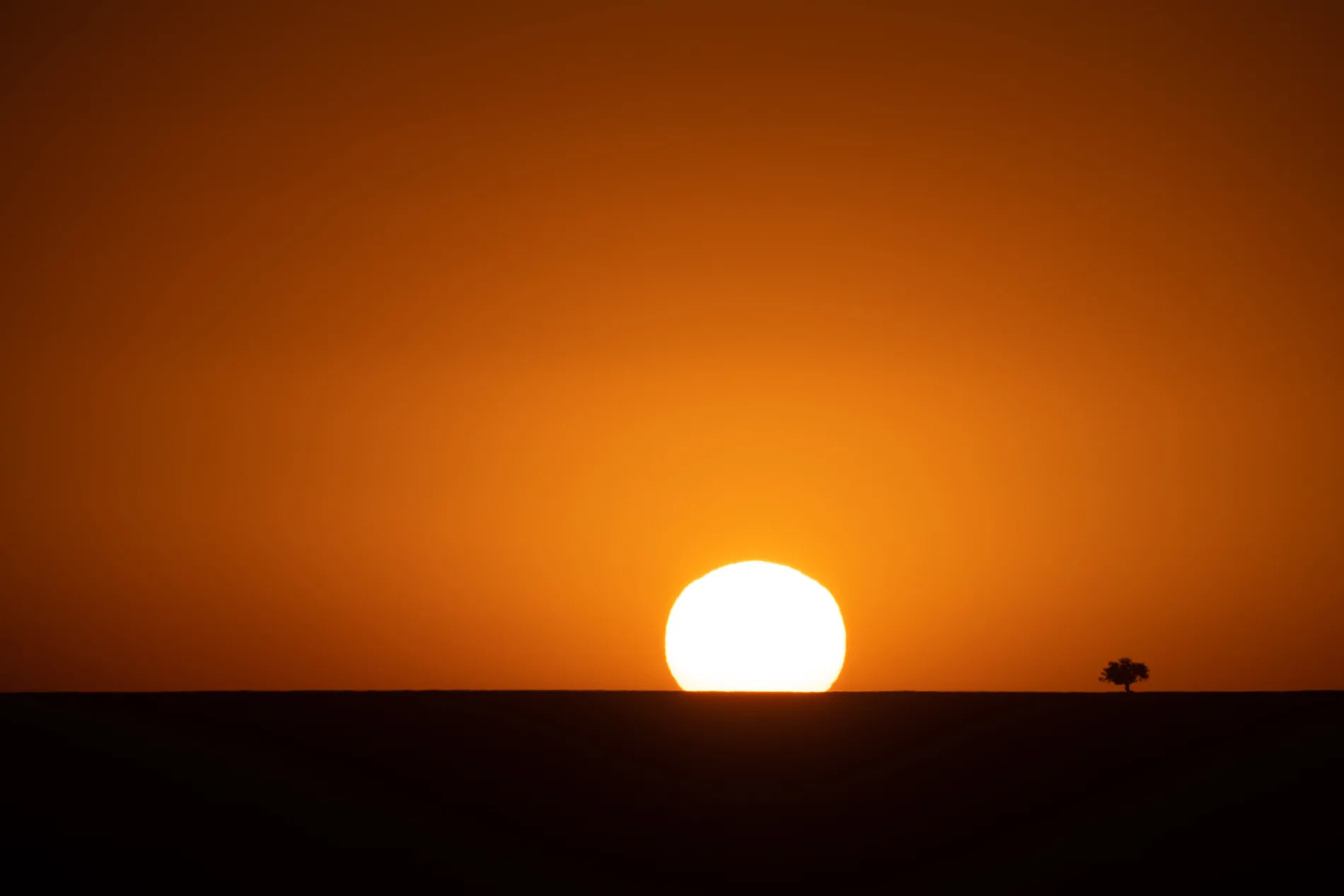
Dawn breaks in the Maasai Mara – the horizon sits like a table top, the sky illuminated in a Fanta-orange hue. I look for a single Balanites tree to complete the story and wait for the golden sun to rise. In that moment there is a sense of peace and tranquillity. Nature is calm. All is as it is meant to be. [f 10.0, 1/2500, ISO 160]
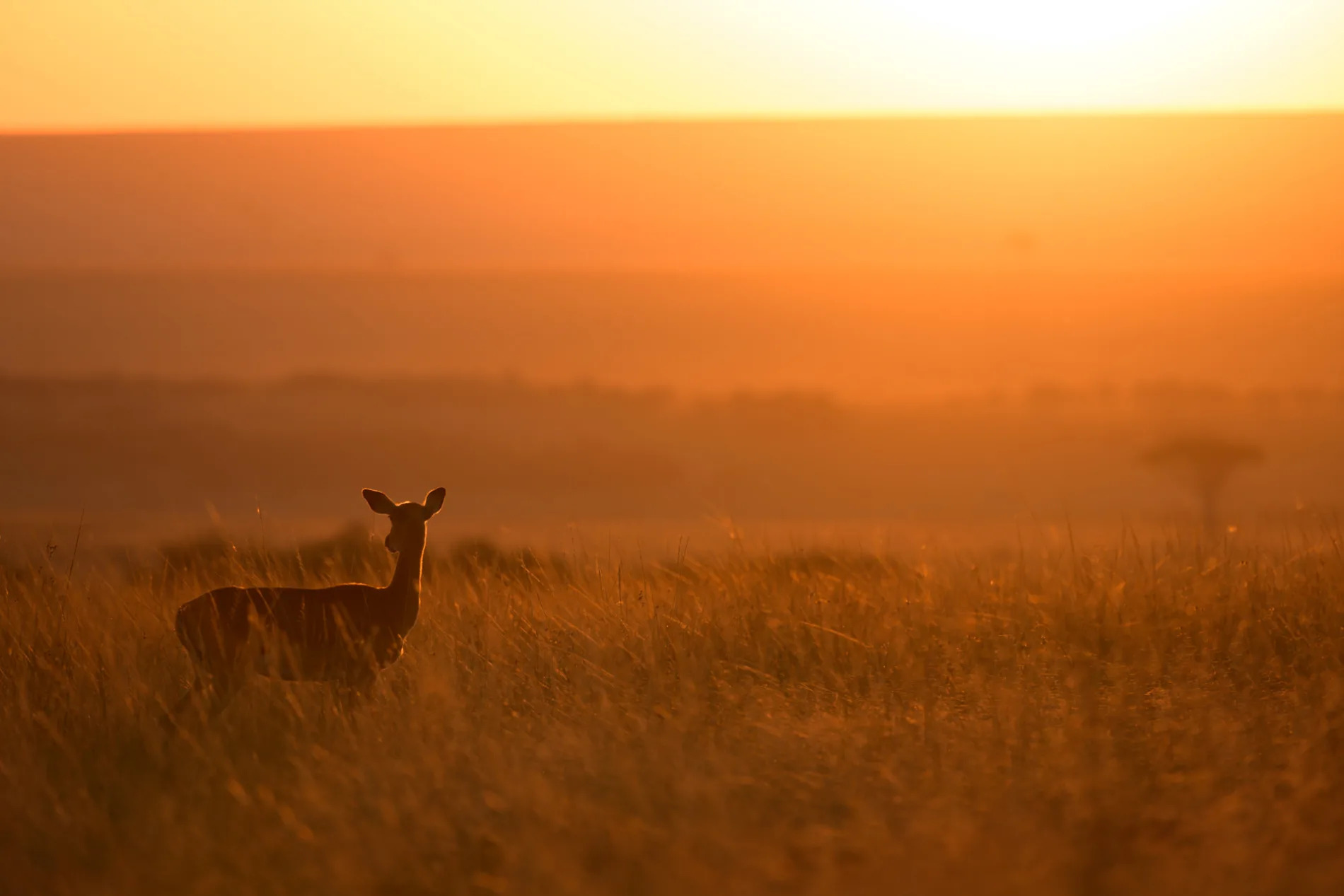
Nearby an impala snorts – an alarm call she shares with her community. Danger lurks in the bushes nearby. A pair of jackals emerge – they are too small to worry about – the impala relaxes. [f 6.3, 1/250, ISO 250]
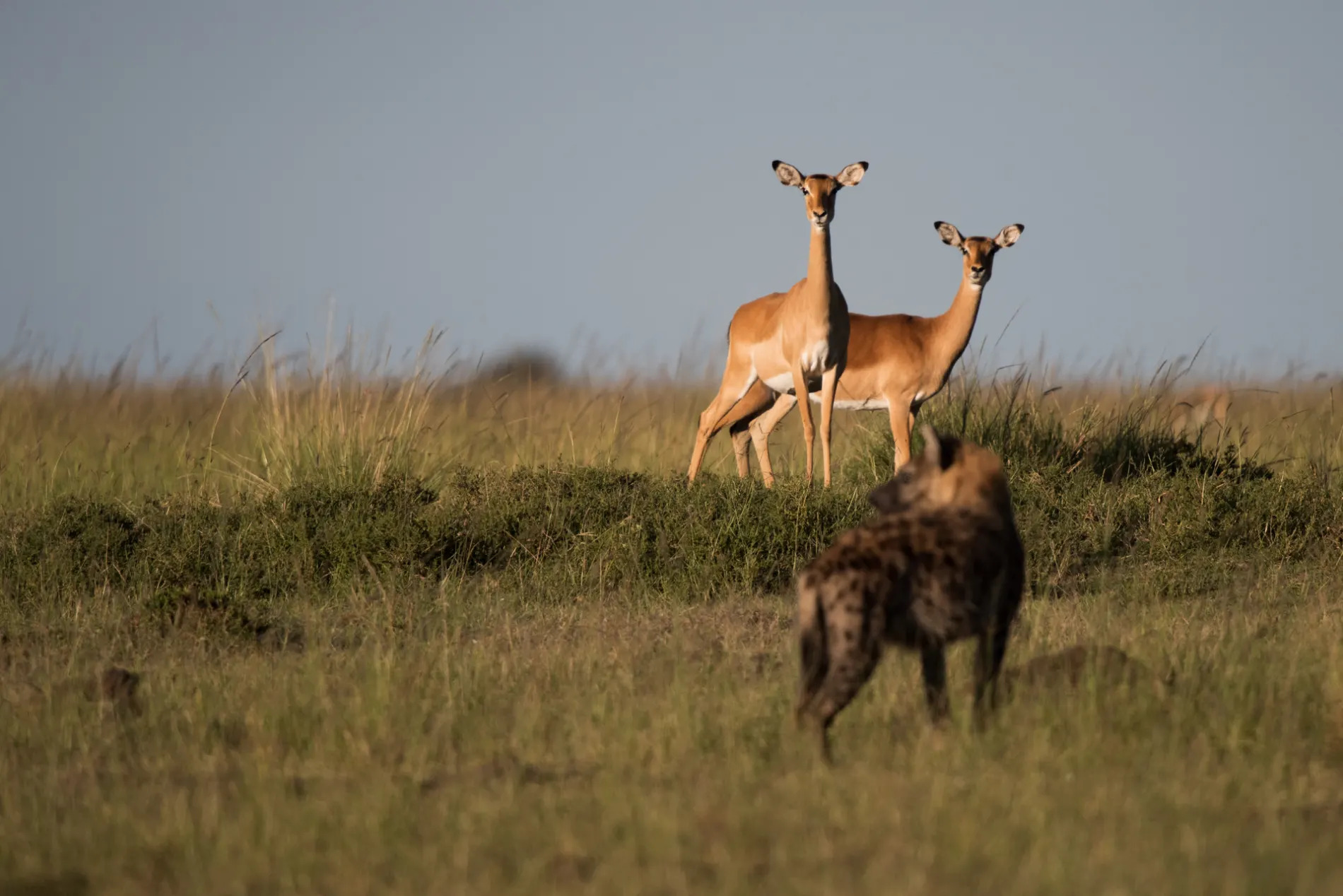
A few minutes later and once again, the impala stand to attention. This time the threat is more real; a spotted hyena is on the prowl. Pacing across the short-grass clearings and sniffing the air. [f 5.6, 1/2500, ISO 400, -0.67]
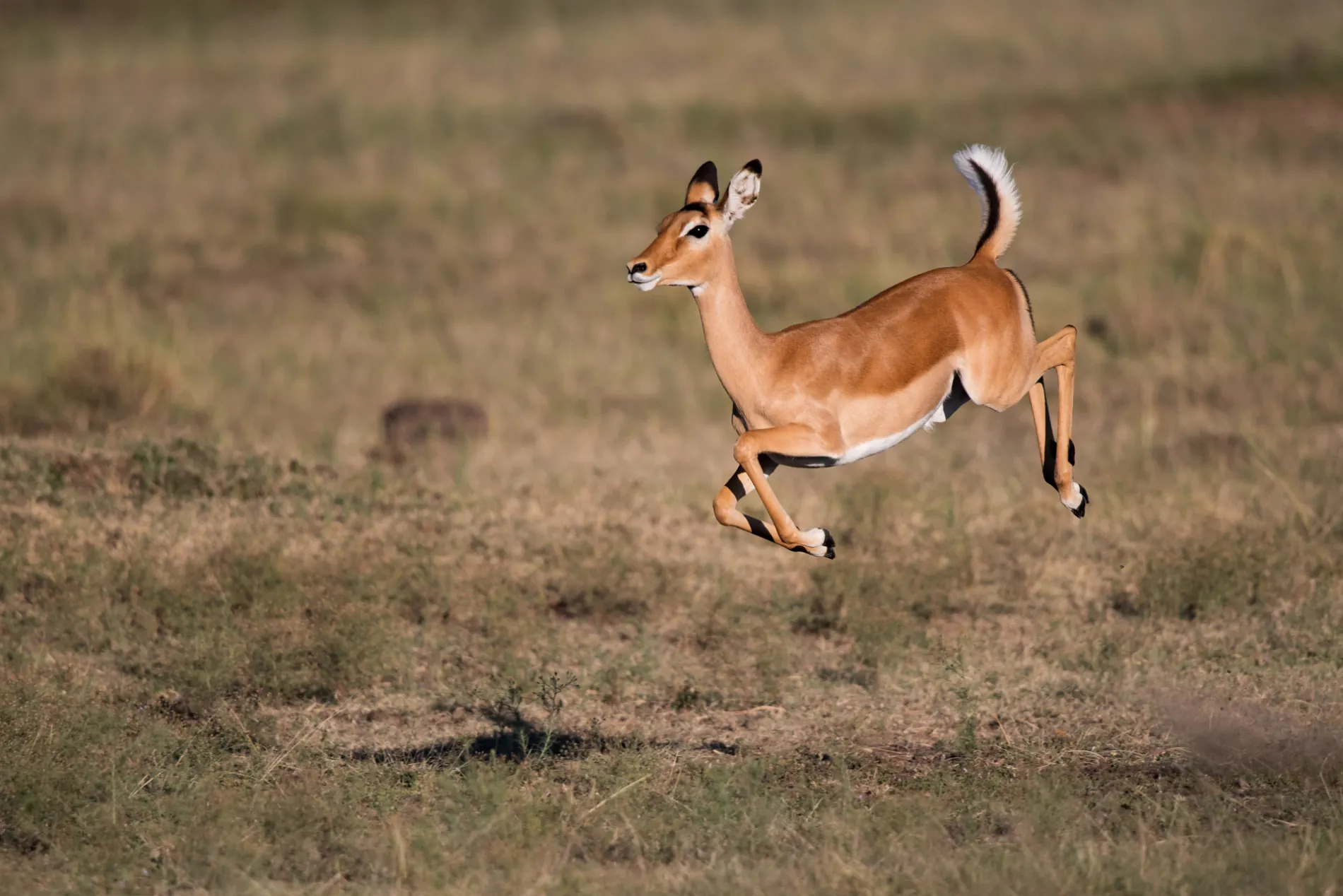
The hyena comes too close and the impala scatter; with extravagant leaps, they pronk across the landscape like ballerinas on the stage. [f 5.6, 1/2500, ISO 400, -0.67]

They do this to show the hyena that chasing them would be a waste of time and energy – they are fit, healthy and agile. [f 5.6, 1/2500, ISO 400, -0.67]
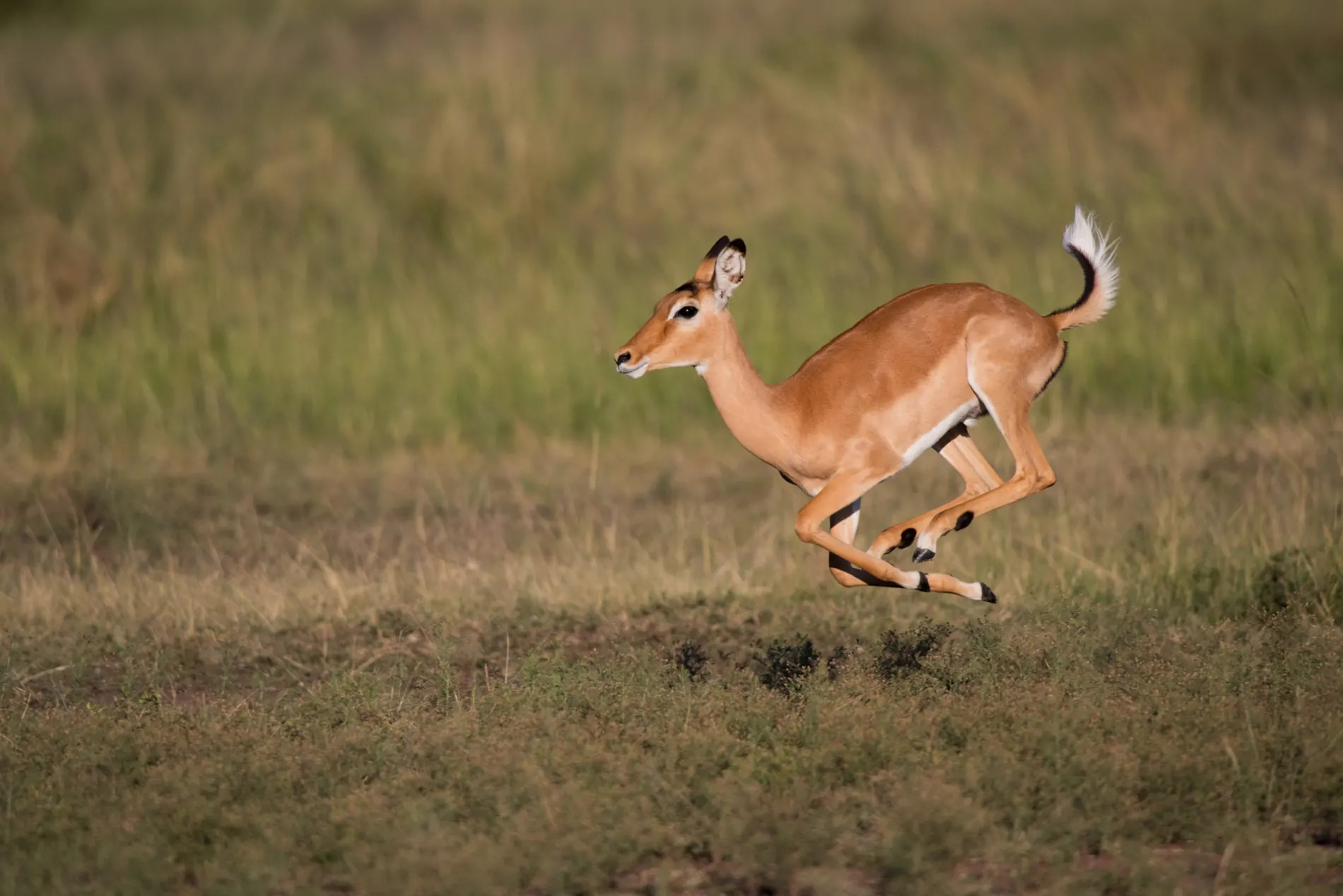
I have a foreign camera in my hands – a Nikon D810 with a 600mm lens. Fellow photographer, Lou Coetzer, kindly lent it to me for the morning – the endless Nikon vs Canon debate continues. I could still go either way. [f 5.6, 1/2500, ISO 400, -0.67]
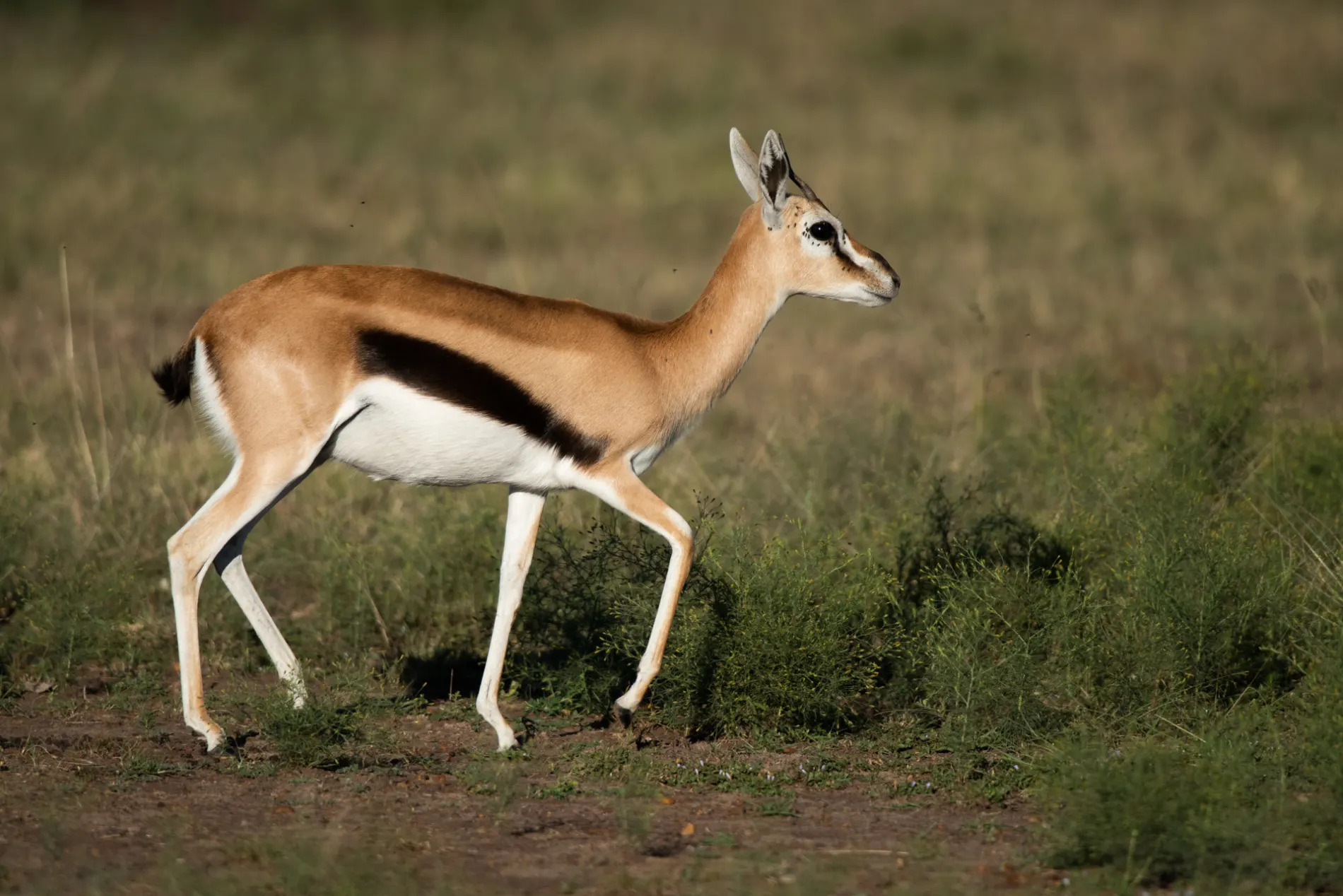
A female Thomson’s gazelle looks nervous and walks with an exaggerated limp. It is clear she is trying to get the hyena to concentrate on her. [f 5.6, 1/640, ISO 400]
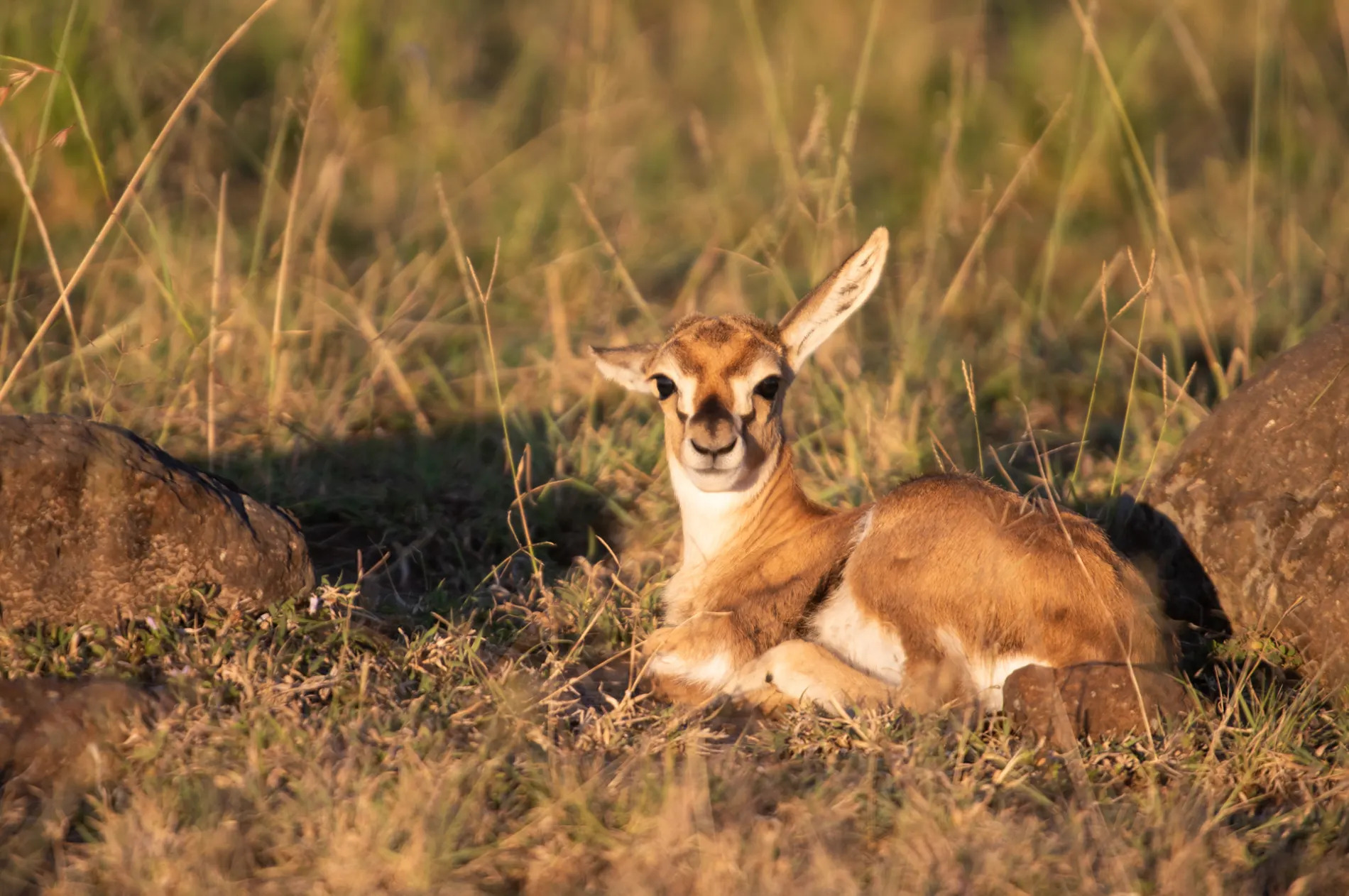
The reason: her precious newborn baby is hiding next to a small clump of stones with almost no cover. The baby instinctively freezes… we position the car; a mixture of emotions churning inside. [f 5.6, 1/1250, ISO 160, +0.33]
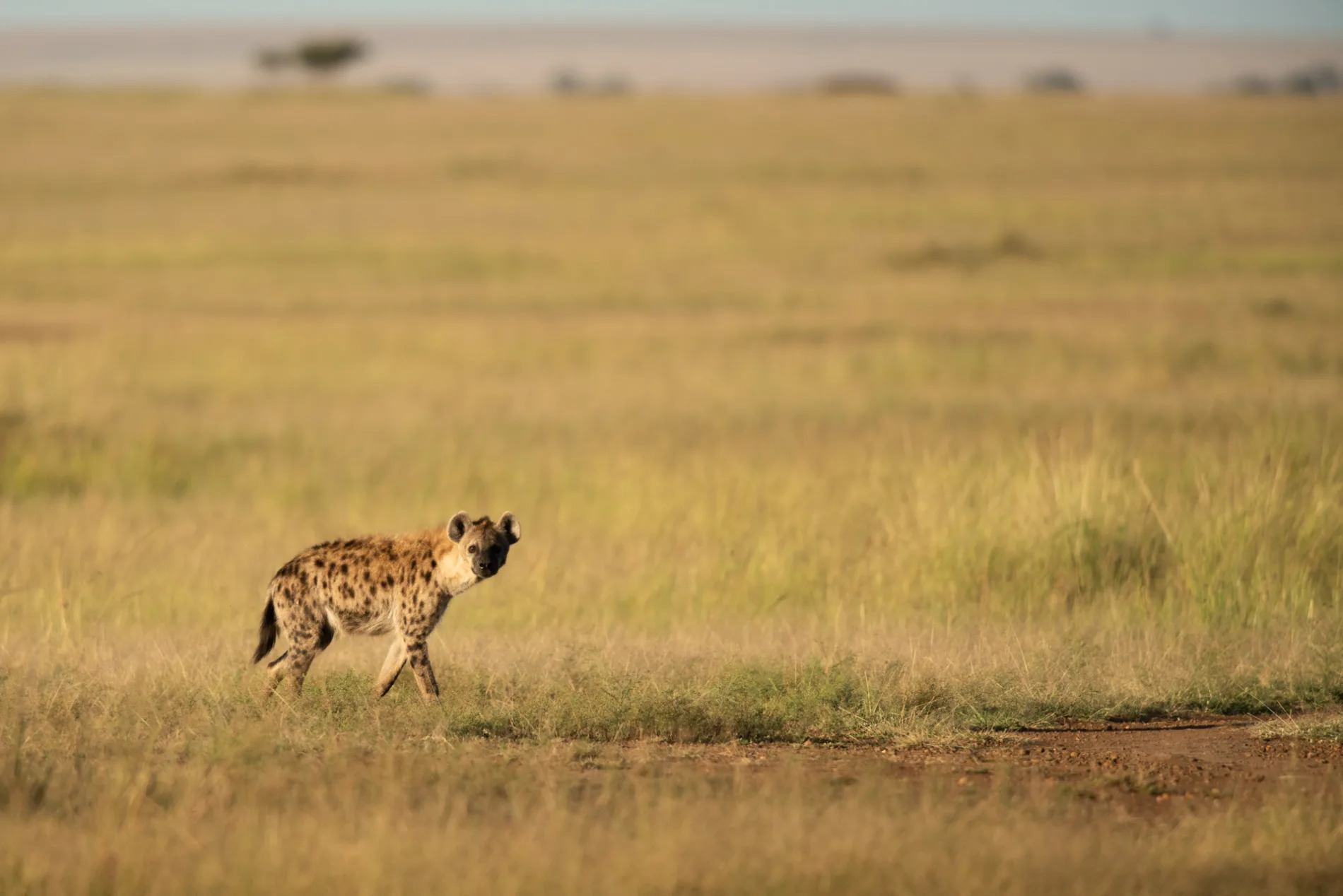
Distracted by the distant roar of a lion, the hyena loses focus and walks directly past the helpless baby. We breathe a sigh of relief, mixed with some disappointment. Oh how strange we photographers can be, almost baying for blood. [f 9.0, 1/400, ISO 400, -0.33]
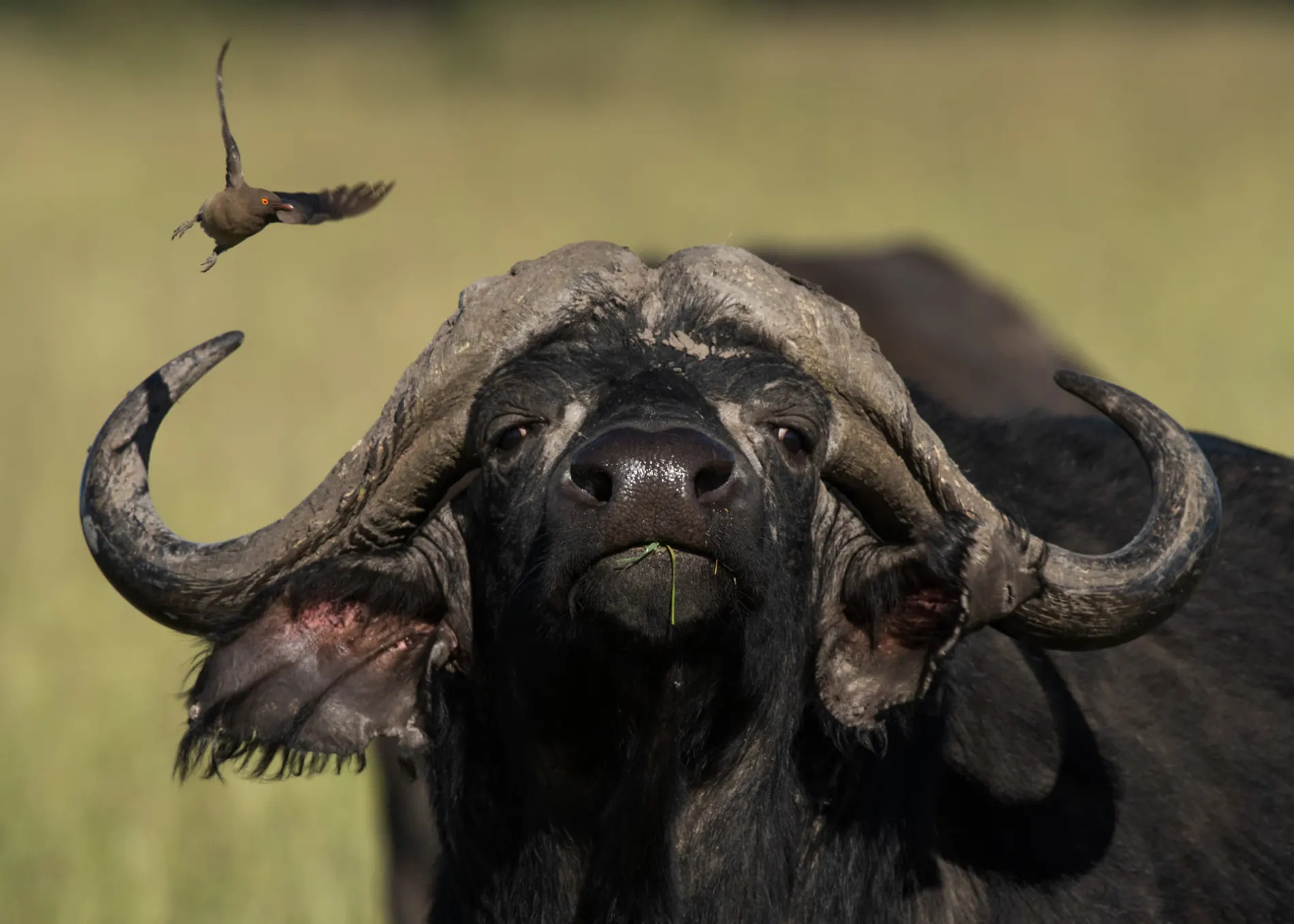
We move a little further and come across a large herd of buffalo. There must be almost a thousand in number. In my homeland of South Africa, huge herds of buffalo are uncommon but here in the Mara we are spoilt. Oxpeckers feed on a breakfast of ticks and flies. [f 11.0, 1/1000, ISO 500, -2]
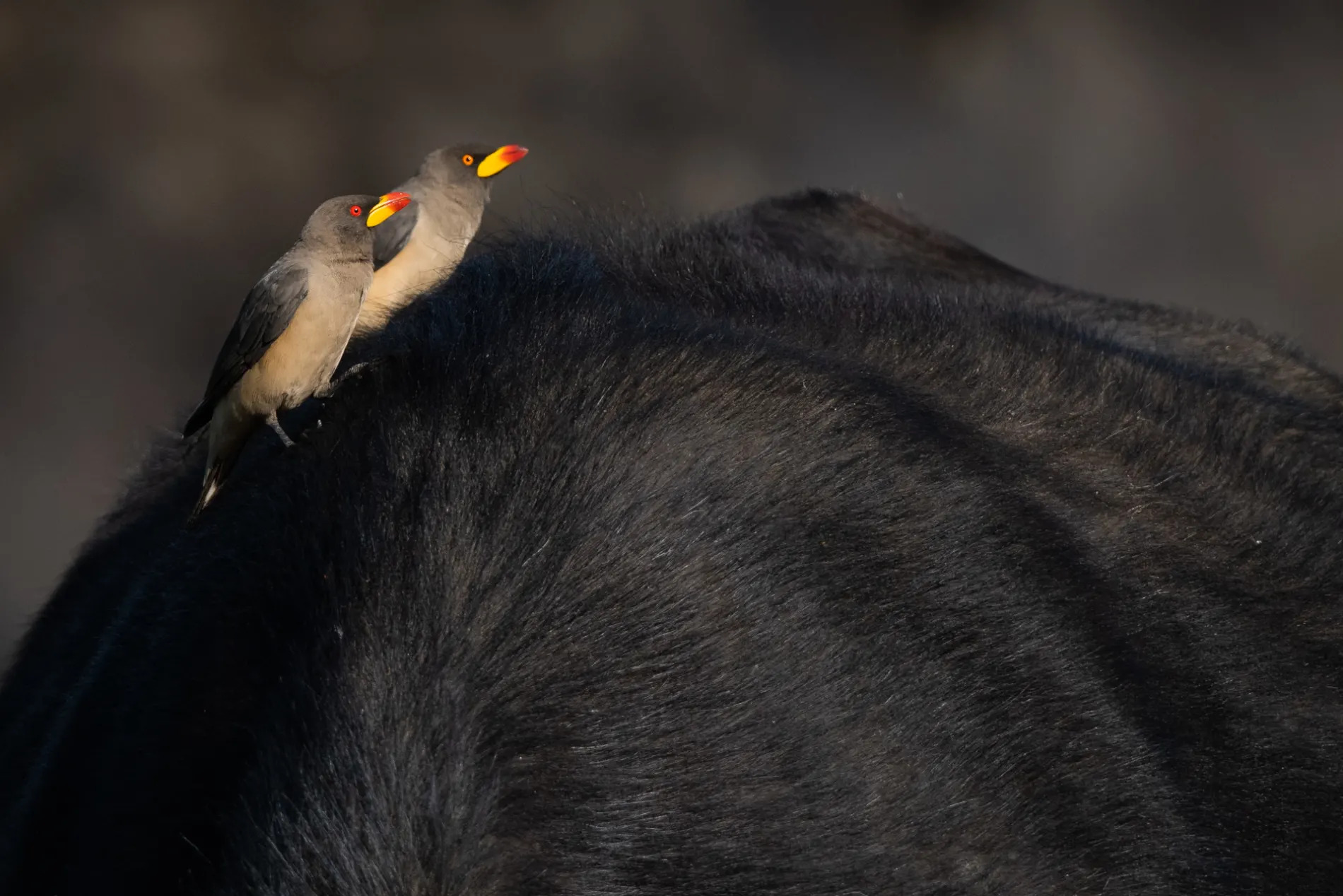
Yellow-billed oxpeckers catching a ride on the back of a male in his prime. I must admit to being very impressed with how this Nikon is performing. Normally I shoot with Canon, but increasingly I force myself to diversify using Canon, Nikon and even Sony on occasion. We all like to say, and believe, that the best camera is the one you have in your hand, but a great camera and quick glass does make a significant difference whilst on safari. [f 8.0, 1/2000, ISO 500, -2]

Being careful not to blow out the highlights on the characteristic yellow bill, I underexpose a full two stops. [f 10.0, 1/2000, ISO 500, -2]
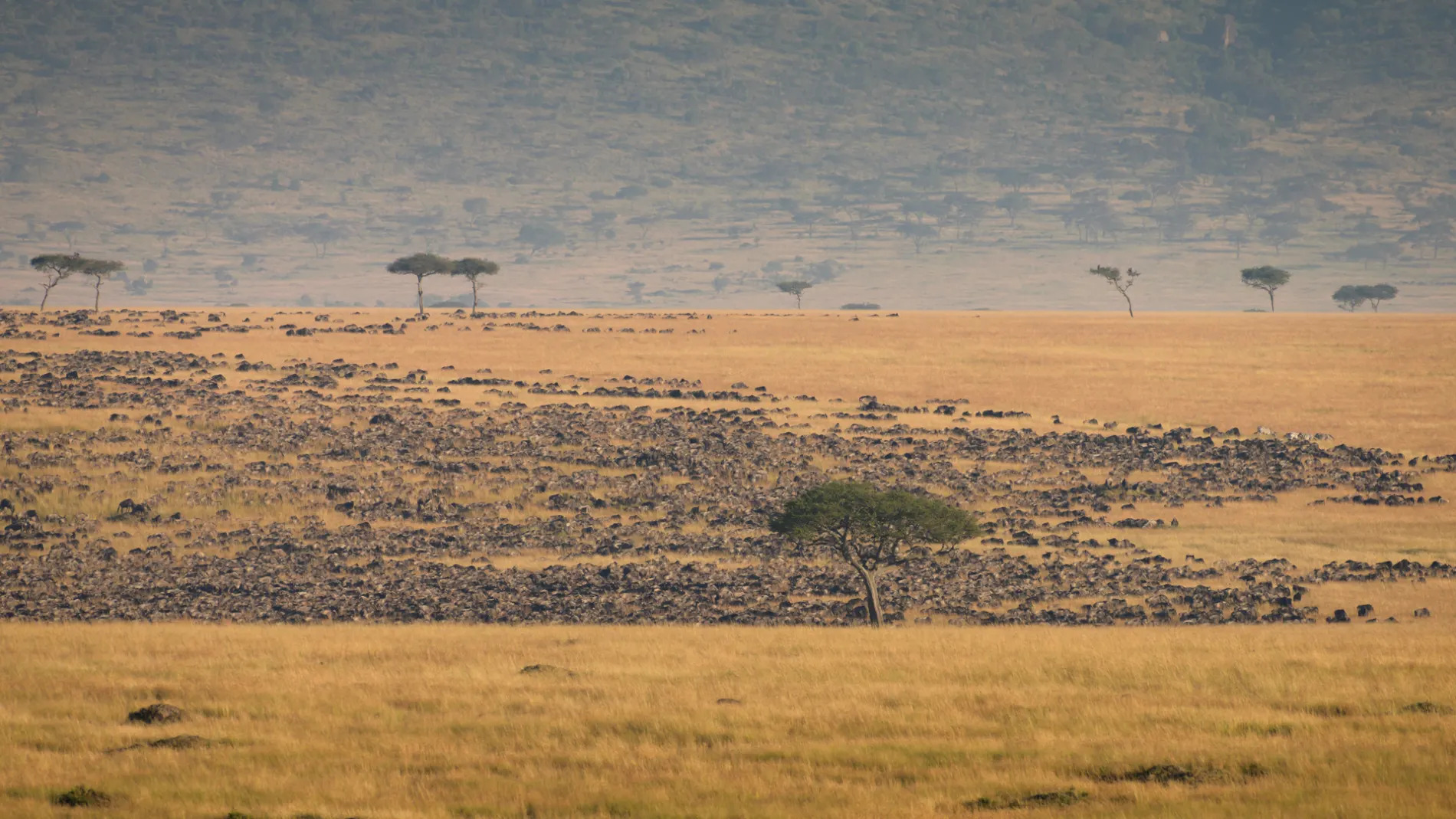
Further south in the Mara Triangle and the mega-herds of wildebeest have at last arrived. Like an approaching army, they head north. There is nothing that can prepare you for the sight of 300,000 animals moving en-masse. [f 9.0, 1/400, ISO 160, +0.33]
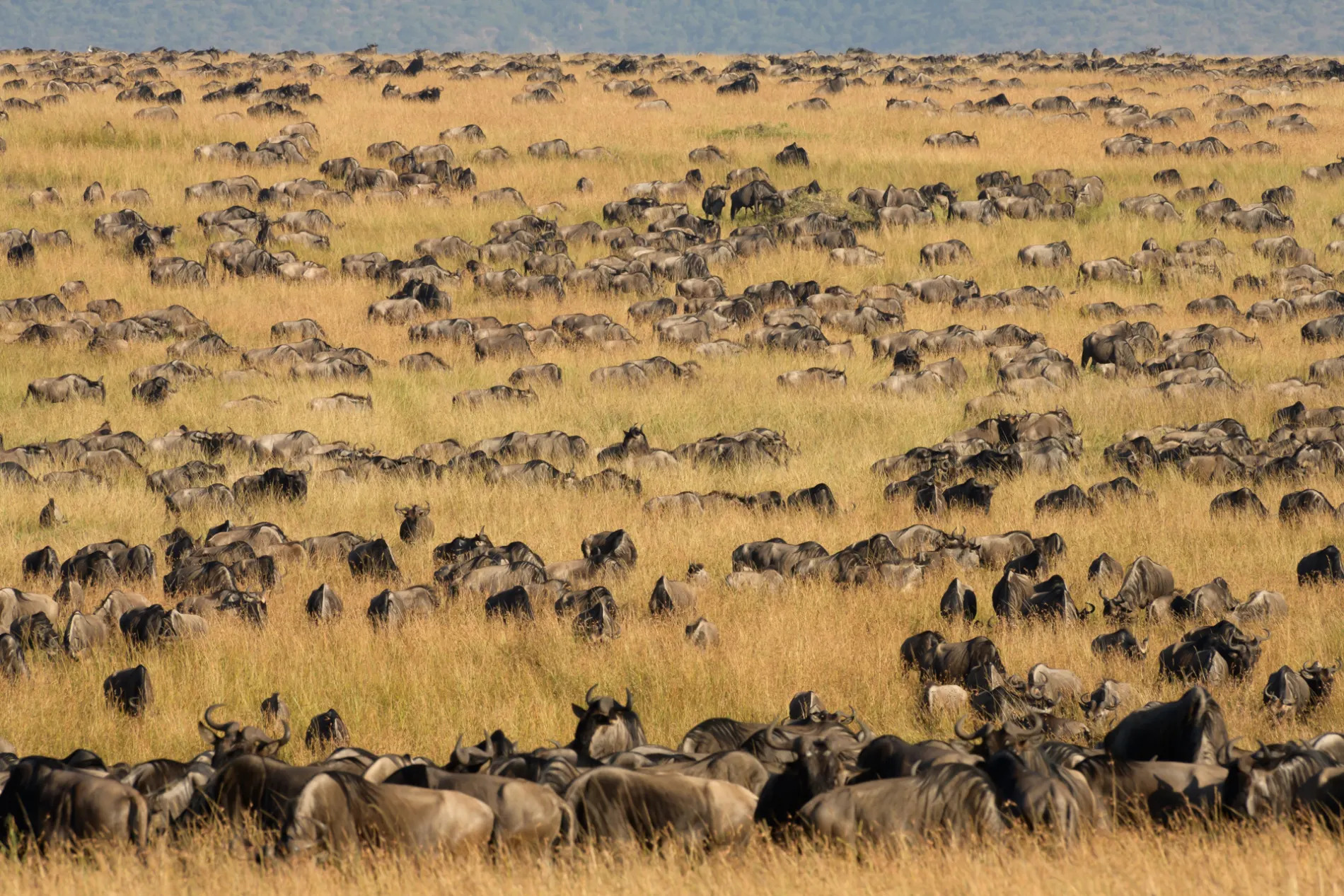
From a distance they look like ants invading the landscape. [f 18.0, 1/200, ISO 640, +0.33]

The giant herds can be incredibly difficult to photograph. I find a gentle slope covered in these animals; it helps showcase the sheer scale of the Great Migration. [f 18.0, 1/200, ISO 640, +0.33]
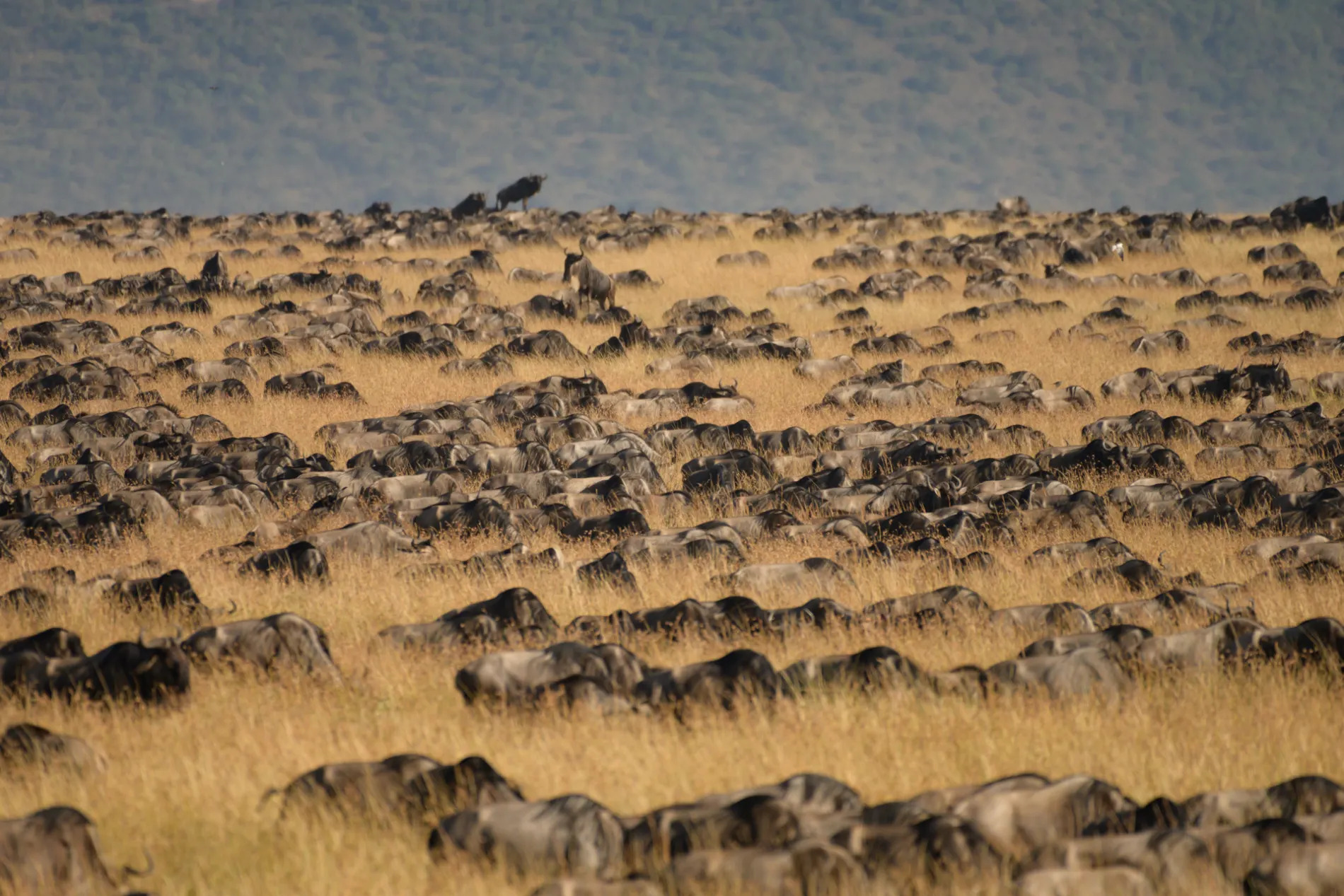
They go on and on… [f 5.6, 1/3200, ISO 640, -0.33]
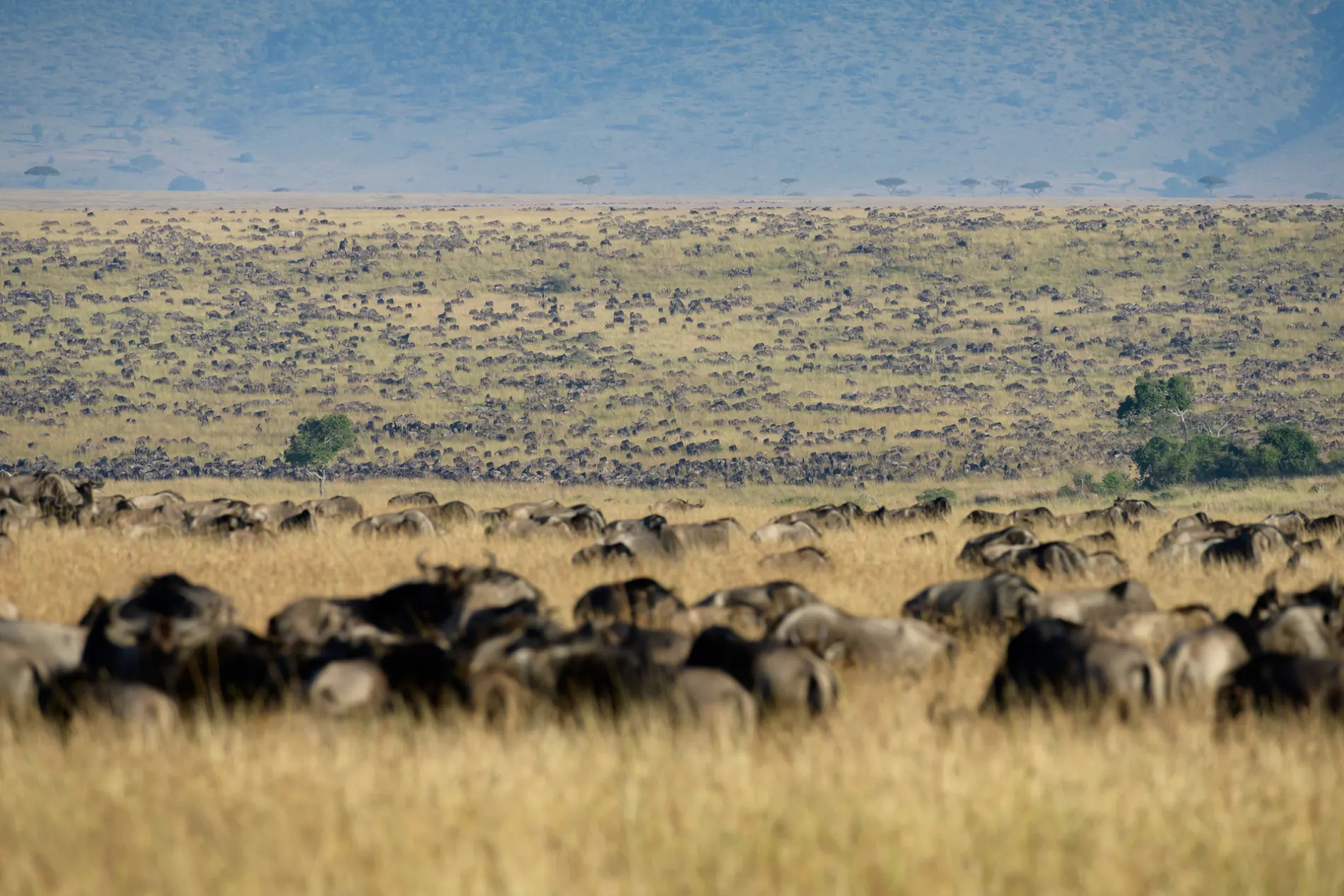
And on and on. [f 8.0, 1/1000, ISO 640, +0.33]
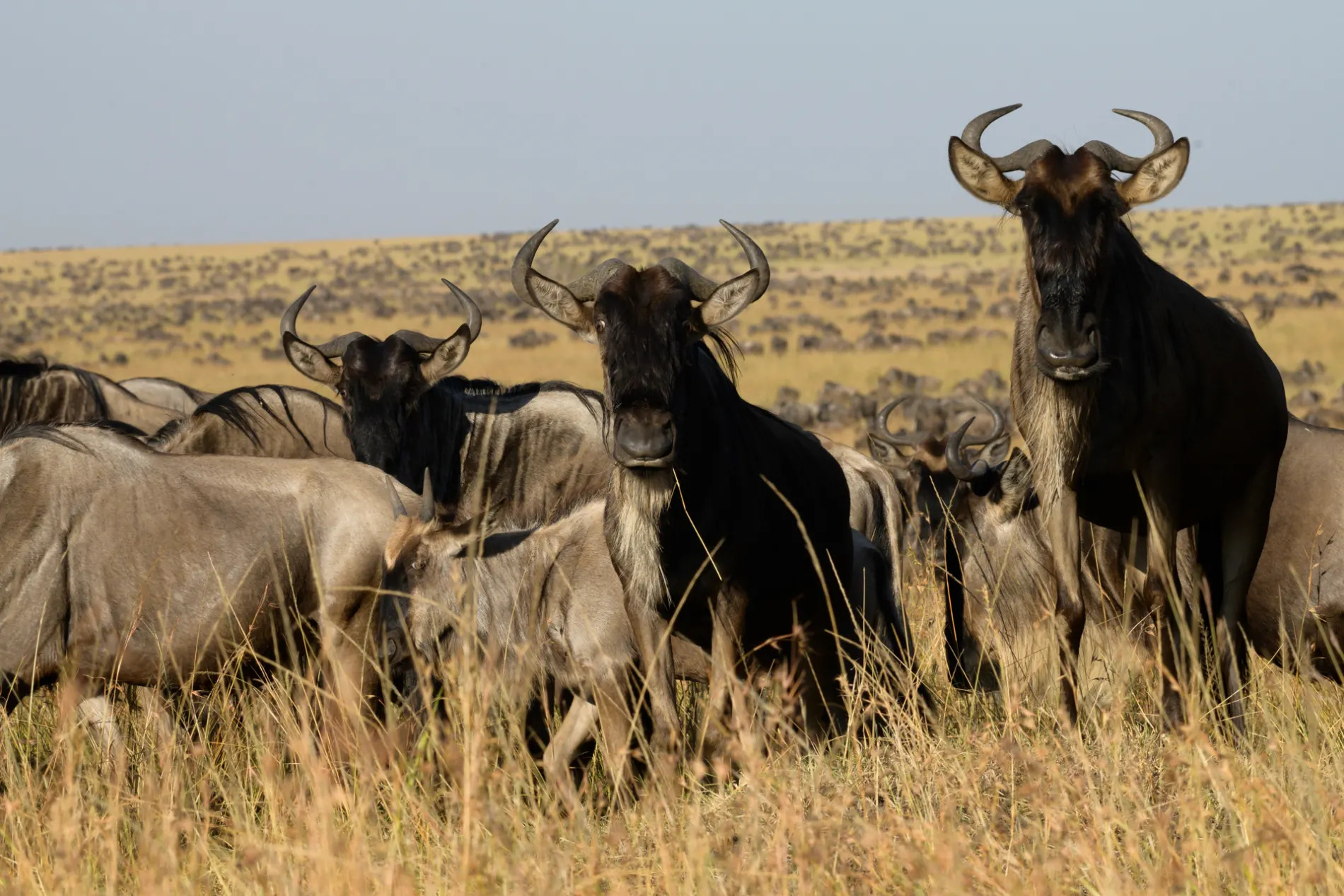
The most unusual looking animals. The most unexpected heroes. [f 9.0, 1/400, ISO 160, +0.33]

Take a moment to think about what it must be like to be a wildebeest – to follow the rain in search of grass. To constantly feel ‘stressed out’ and in fear of when their time will come to be hunted down. Do they think of death as they march through the long red-oat grass? Do they see the lions stalking? [f 6.3, 1/2500, ISO 400]

How can they know? Even from an elevated car, it is hard to see the Owino Pride lioness move. [f 4.0, 1/8000, ISO 400, -0.33]

Just moments earlier, this same lioness had been fast asleep on a grassy termite mound. [f 2.8, 1/4000, ISO 250, -0.67]

A distant bleat – the migration approaches. She is up. [f 2.8, 1/4000, ISO 250, -0.67]
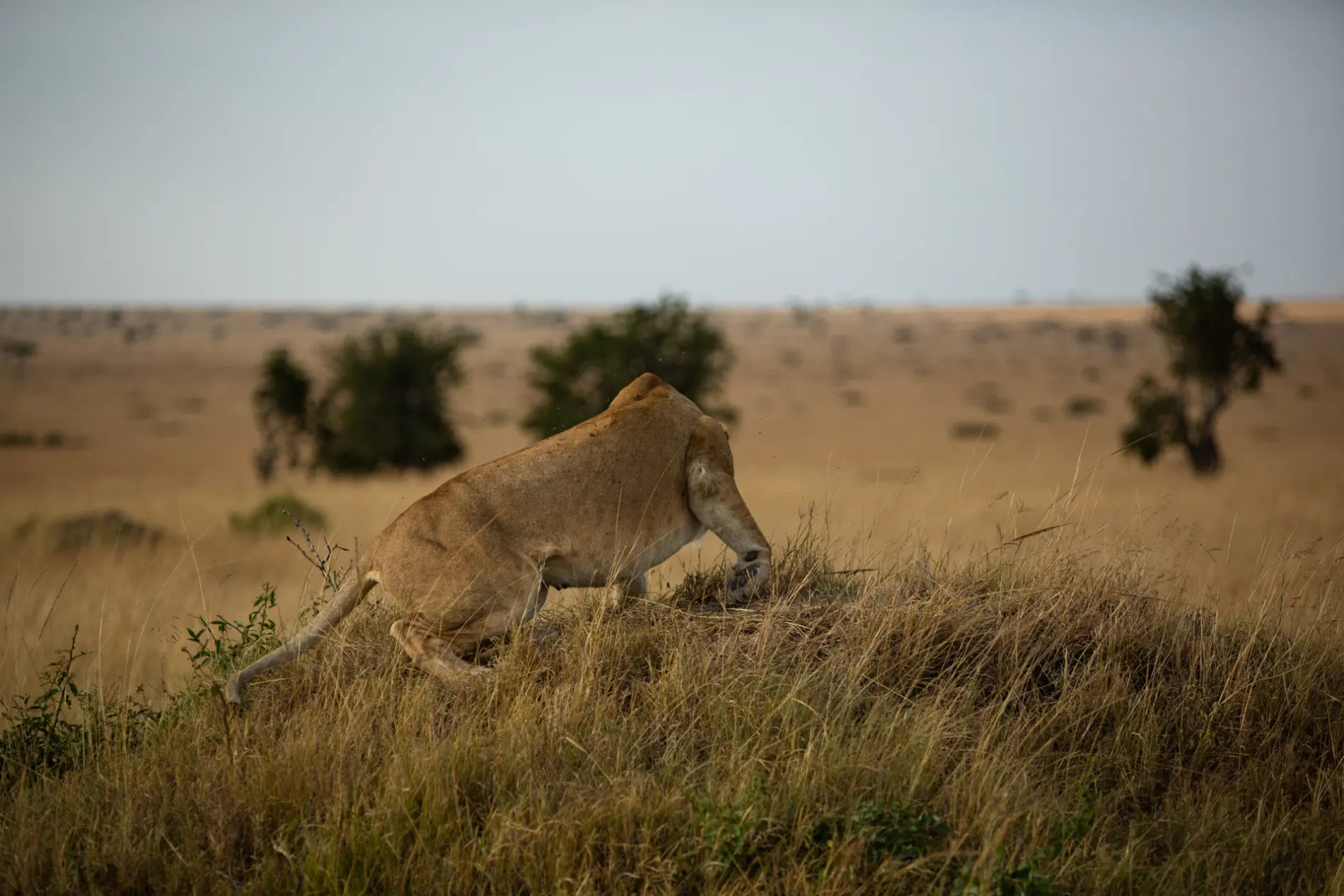
And in a flash, she is down the mound. [f 2.8, 1/4000, ISO 250, -0.67]

There is nothing quite like the intense concentration of a lioness when she has her eye on the prize. On this occasion, it was a single-file line of wildebeest streaming past her. [f 6.3, 1/1600, ISO 400]
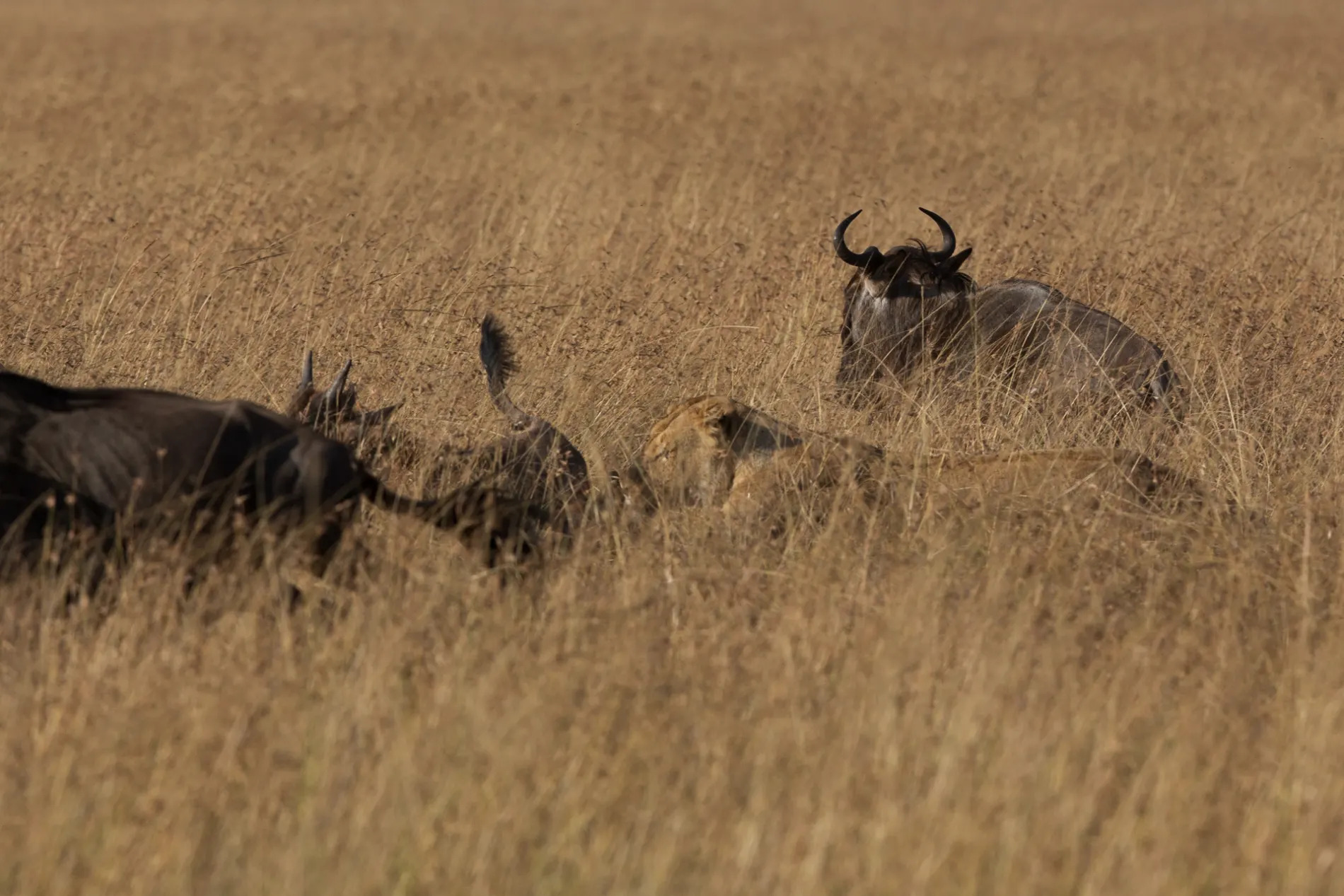
She moves like a rocket – keeping her in frame is nearly impossible. [f 6.3, 1/1600, ISO 400]
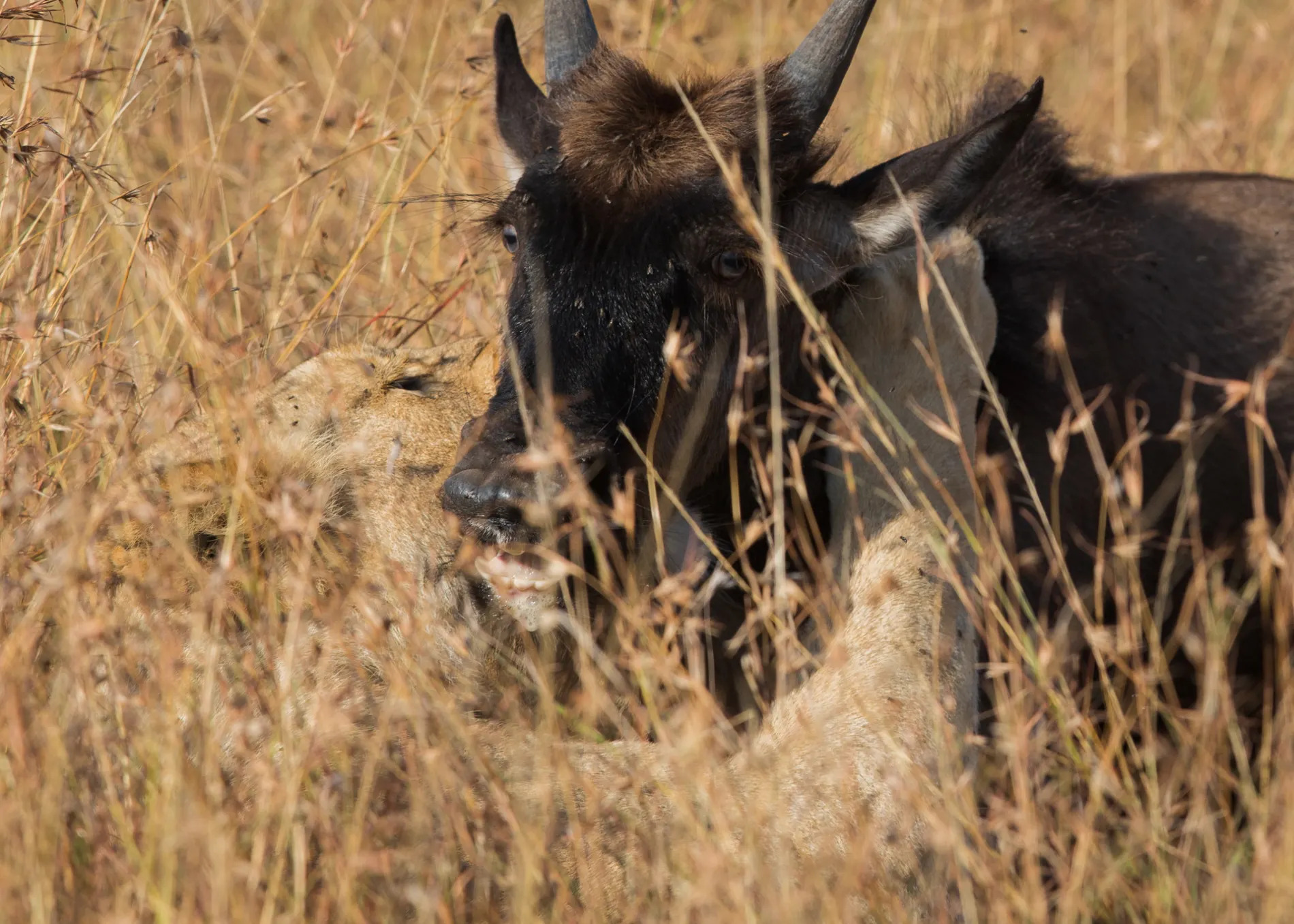
The young wildebeest had no chance. She goes for the jugular, her claws grip into flesh. This wildebeest was born six months ago, 260km to the south. This was its first migration. [f 6.3, 1/1000, ISO 400, -0.33]
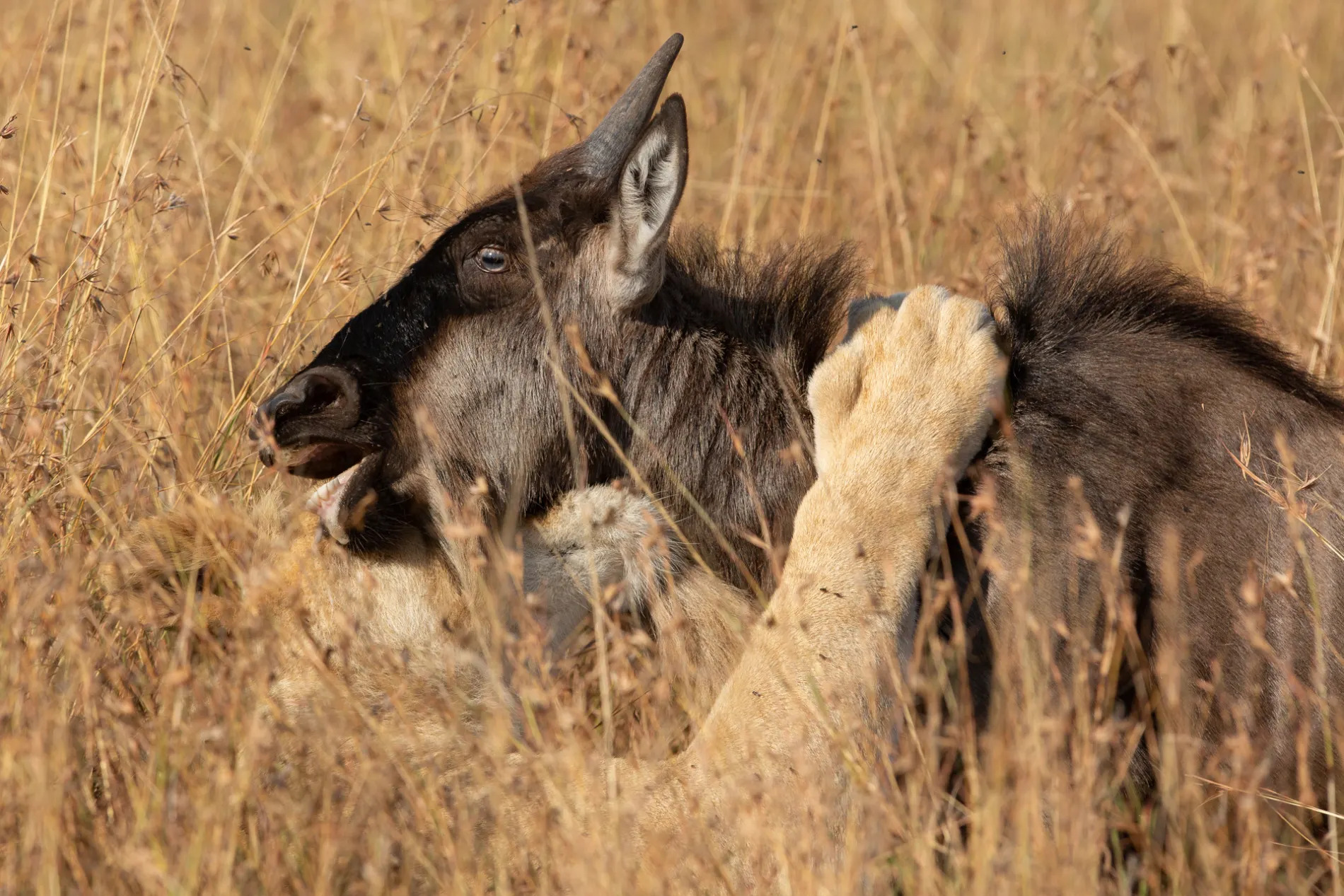
It tries to fight back – a little. [f 6.3, 1/1000, ISO 400, -0.33]
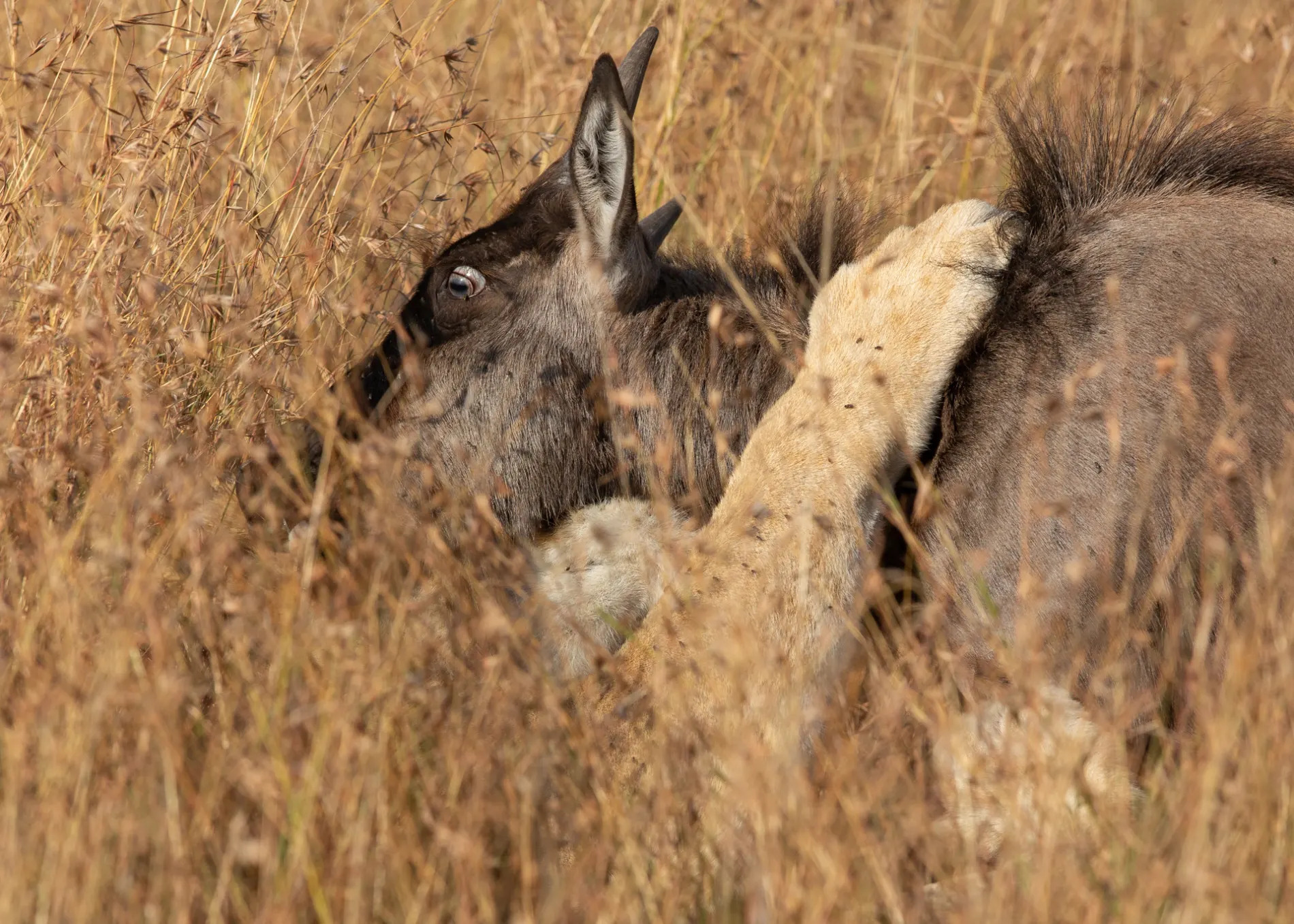
But the Owino lioness is experienced and makes short work of the kill. For a split second, the baby wildebeest looks utterly petrified. And then it is over. [f 9.0, 1/400, ISO 160, +0.33]

Just like that the lioness is gone – she has vanished. The carcass of the wildebeest hidden in the waving grass. [f 8.0, 1/2500, ISO 400, -0.67]

Seconds later, we see her shoulder blades in the grass – she has her eye on another. She makes the kill. And outrageously, she makes a third. Three kills in five minutes. It is as if she couldn’t help herself. [f 4.0, 1/8000, ISO 400, -0.33]
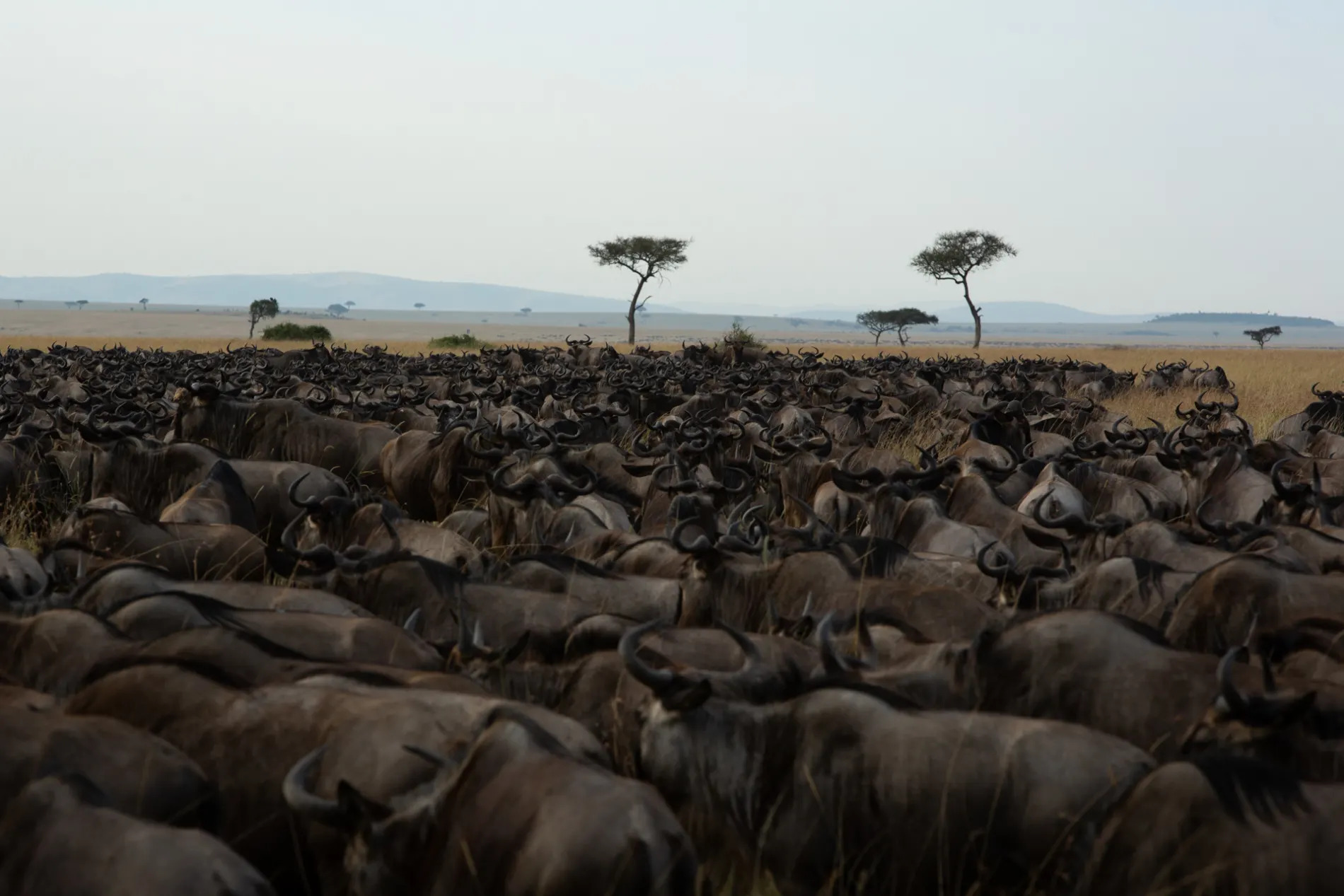
At times it can seem rather senseless, but nature follows its own rules. When left alone, there is an equilibrium in everything. Tens of thousands of baby wildebeest will survive the gauntlet of the migration. In turn they will reproduce and the cycle will continue. How privileged are we to be able to be spectators in this most magnificent of places. [f 11.0, 1/160, ISO 320, -0.67]
THIS WEEK A YEAR AGO

It’s not just lions that move like ghosts in the long grass. This week last year, I had the most incredible sighting of the large Shepard Tree male leopard unsuccessfully stalk a herd across the open grasslands. There wasn’t a tree anywhere in sight and yet this leopard effortlessly crawled hundreds of meters towards a nearby herd of eland and zebra. He was not lucky on this occasion, but I can assure you, he has had many a successful hunt in the year gone by. [f 9.0, 1/1000, ISO 500]
TAGGED WITH: Angama Mara, Great Migration, Mara Triangle, Wildebeest, Lion Kill, This Week At Angama, Lions of the Mara, Wildlife Photograph



COMMENTS (1)
Roger Wright
August 9, 2019Great photography and fantastic story telling . Thinking of changing from Canon to Nikon.
REPLY